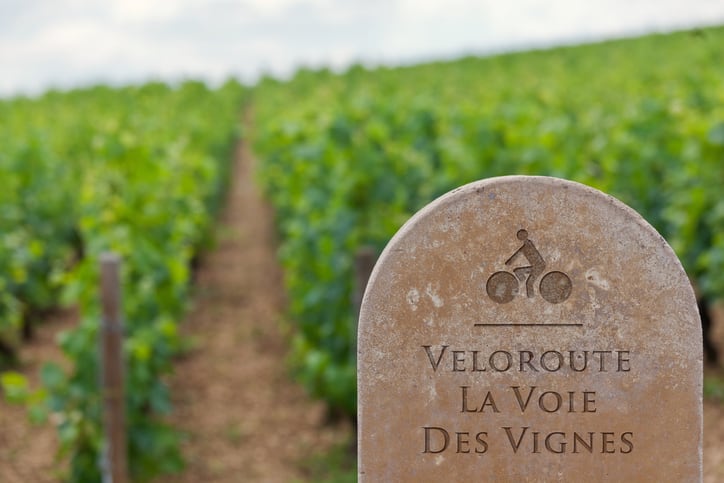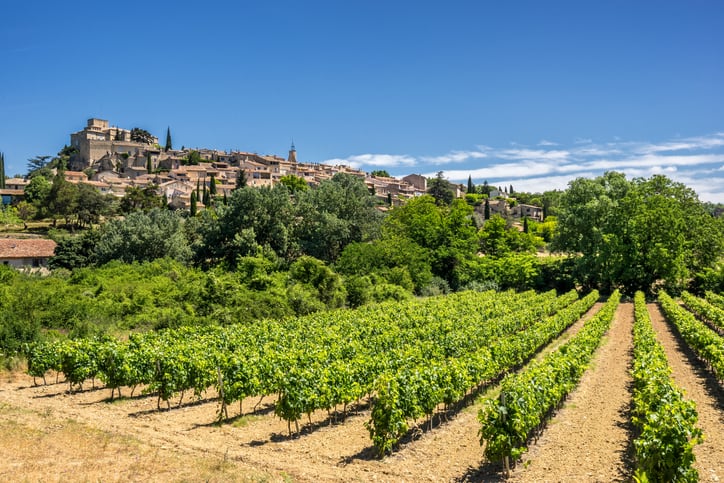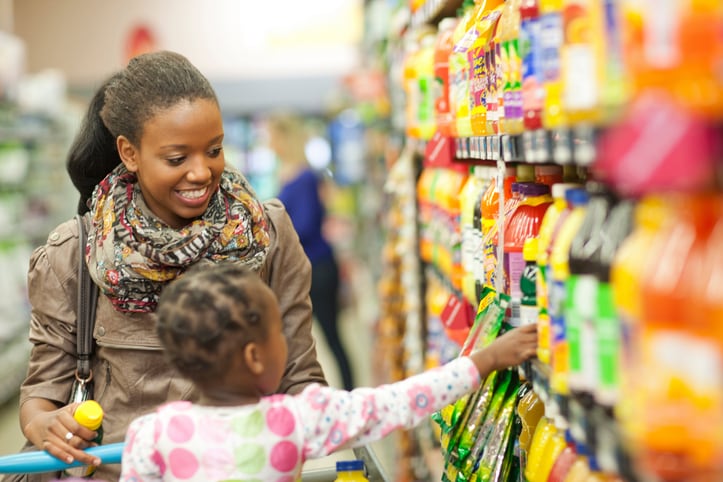In France, wine consumption is plummeting. The industry has seen a decline in sales since the 1970s. The wine industry is in crisis: with a huge overproduction of wine and fears for a traditional livelihood.
But organic wine offers a glimmer of hope.
Overall wine consumption in France dropped 2.6% in 2023, shows statistics from OIV. That’s just the latest in decade-long declines.
But the organic wine sector saw growth of 7% by value and 6% by volume, according to organic wine non-profit association Sudvinbio. Those are growth rates than most wine stakeholders can only dream of.
France is Europe’s largest consumer of organic products, and over the last decade that’s done lots to help boost organic wine in the marketplace. But what’s interesting is that organic wine has kept up the momentum (unlike organic food, which has seen growth abruptly disappear as inflation hits hard). In fact, 1 in ten wines sold in France is now organic.
In France - as in many traditional wine producing lands - wine making is a job that’s passionately passed down through generations, with each domaine priding itself on its heritage, story and identity.
New generations are facing different realities to their grandparents: ranging from rising costs to weak demand. But they’re also bringing different attitudes with them. Producing wine in France has long been about terroir - protecting and valuing the soil and land - and that’s only got stronger as the new generation become more acutely aware of climate change and the environment.
In 2013, there were 4,656 organic wine producers in France. In 2023, there were 12,022. This year, SudVinBio surveyed organic winemakers about why they’re so passionate about organic wine – and the survey showed they bring the preferences of the modern generations with them.
What is an organic wine?
- Organic wine is defined by European regulations on organic farming. This includes a ban on synthetic fertilisers and pesticides but also outlines some winemaking products or processes.
- France is one of the top producers and consumers of organic wine.
- One in 10 wines in France is now organic, showing the consumer demand.
- Production acreage has doubled over five years, now reaching 21.7% of vineyard area in the country.
Most organic winemakers – 88% of those surveyed – said they’ve turned to organic because they believe it’s fundamentally better for human health than wines produced with pesticides in the fields or chemicals in the production process.
A similar number – 84% - championed the environmental aspects of organic wine, championing biodiversity as a key motivation.
Those motivations are far ahead of quality: an aspect cited by 56% of respondents.
That’s leading to a sea change in wine production. Organic vineyard acreage in France has grown steadily over the last 10 years.
In 2013 there were 61,921ha devoted to organic vineyards; in 2023 they covered 171,265ha.
That means that organic vineyards make up 21.7% of vineyard area in France (Spain and Italy – which, alongside France, make up the power trio of worldwide wine production – also count around 18% of their vineyards as organic.
SudVinBio now counts 1,100 wine grower and co-op members and 45 organic wine marketing companies among its membership.
“The figures are pretty positive, both for vineyard conversions and consumption, at a time when the situation has deteriorated for wine and organic products,” said Nicholas Richarme, chair of SudVinBio.
“Whereas organic farming acreage across crop types dropped for the first time in our country in 2023 (down 1.92%), conversions of French vineyards continue to gain traction, with an increase of 1.6%.
Is organic wine more expensive?
Labor costs for organic wines are higher, because wine-growers spend more time in their vineyards. There is also the cost of conversion and certification.
As a general rule, it is seen as more premium product. However, as with the wine category in general, there are wines in every price bracket, so there is a range of entry-level, mid-range and premium wines.
“However, the rate is tending to slow, firstly because the potential to convert vines mathematically decreases as more land is converted, and also because the industry’s development has always alternated between phases of growth and slow-down in order to balance supply and demand in response to cyclical changes.
“The situation for winery sales in the same. Although sales of foodstuffs stalled in 2023, the organic wine category stood out for its positive performance with growth of 7% by value and 6% by volume.”
But organic wine makers are not complacent. They know first-hand the challenges the wine industry faces, and know they have to start thinking outside the bottle.
The SudVinBio survey shows that many (65%) are thinking about oenotourism: following in the steps of industries such as whisky and tequila which have seen visitor experiences bloom (and remember, France already attracts the most tourist arrivals in the world: winemakers only need to attract them from Paris out to the vineyards, which is not a hard sell).

Meanwhile, 62% of the winemakers surveyed say diversification is the answer; while 50% say moving to products outside of wine is a solution.
And exports are another potential channel for growth for French organic winemakers. France is already the world’s highest-value exporter, according to OIV data. That means the know-how and infrastructure for exports is already in place.
Exports of organic wine grew 5% in 2023. And while consumption of organic products (outside of wine) is stalling in France, it’s still growing elsewhere: opening the door for further export potential.
Organic power
In the land of wine, the French consumer faces an array of labels on the wine shelf: from organic (Bio) to biodynamic (Demeter) to natural to environemntal (Haute Valeur Environnementale).
Organic’s power point is that, today, most consumers instantly know and understand – even if only in loose terms – what organic stands for: associating it with environmental and health benefits.
As a more premium product, organic wine is thriving in channels such as wine merchants (up 12.4%) and D2C sales (up 14%). Growth in supermarkets and hypermarkets hasn’t seen the same buzz, although these only account for 8.2% of industry revenue.
In it for the long game
Winemaking in general is not a profession with immediate returns, but one that requires planning over periods of multiple years when it comes to growing vines or maturing wine.
Similarly, becoming organic is a journey. There is a mandatory three year conversion period for vineyards before an organic endorsement can be displayed (although from year 2, the vineyard can use the statement ‘converting to organic farming’).
Spotlight: Occitanie
Situated in the South-West of France, Occitanie is France’s largest wine region and leading organic region.
It covers four of the country’s largest wine areas: Languedoc, Roussillon, South-West and the Rhone Valley.
The region is home to 33% of French vineyards and 51 protected designations of origin (PDO/AOP) and 36 geographical indications (PGI/IGP). It also contains around 35% of France’s organic vineyards.
The region’s conversion rate is also higher than the national average. Occitanie was one of the original centers of the organic movement in France, with winegrowers among the first to revert to the principles of organic farming in the 1970s and 1980s.
But French organic winemakers consider this as good investment in setting their vineyards up for the long term.
“Generally speaking, companies are fairly optimistic, but their confidence is stronger in the long term than in the short term,” said Richarme.
“The survey shows they are more confident in the future of organic wines than in the future of wine in general. They predict a drop in wine consumption but a rise in organic wine consumption worldwide, and even in France, although the strongest growth is expected in Northern Europe and North America.
“Interestingly, they are more positive about the long term than the short term. For instance, 30.5% of the organic winegrowers surveyed foresee growth in the French market over the next ten years, compared with just 20.5% over the next three years. This confirms the importance of supporting demand in the short term to avoid cyclical challenges or concerns stymying development of the industry.”



